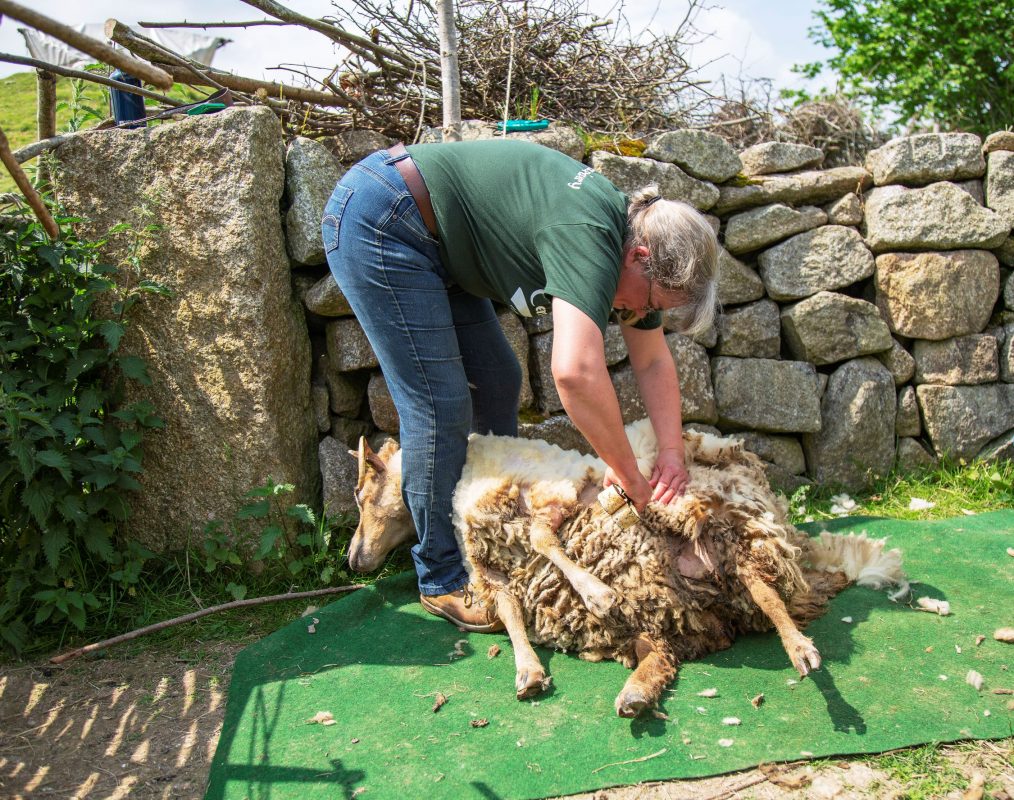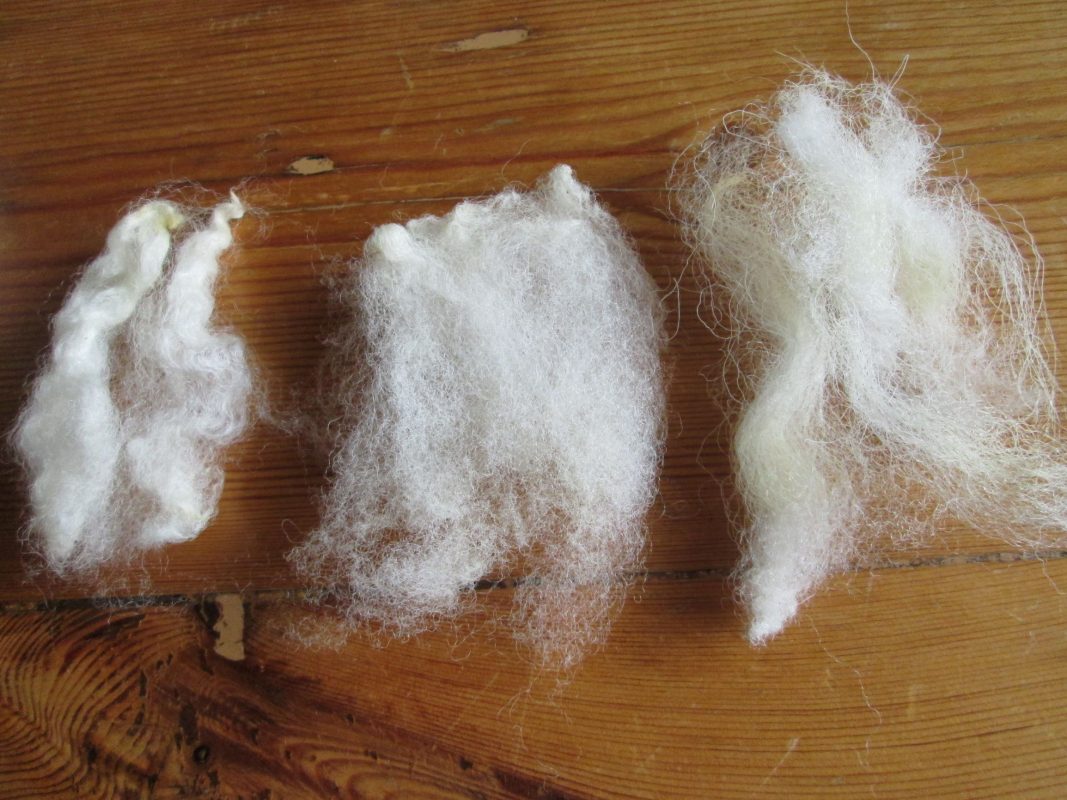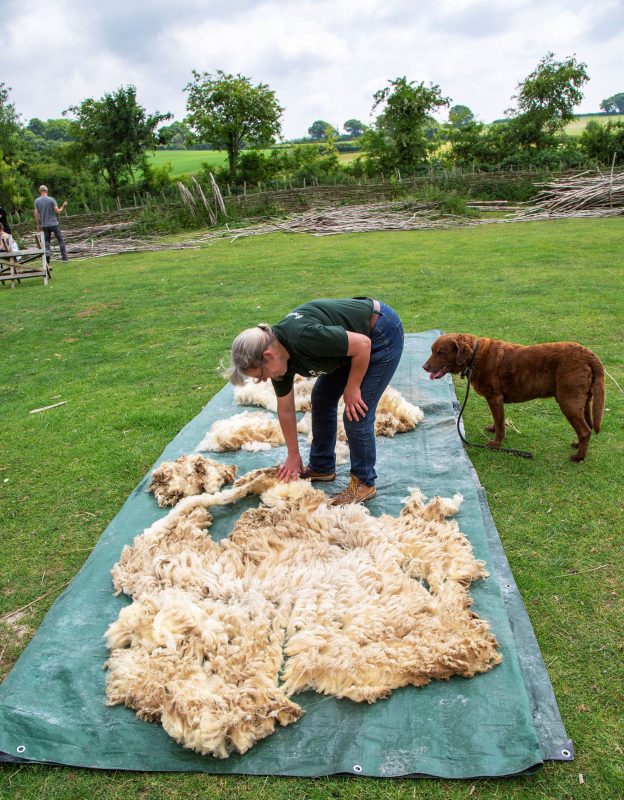Uncategorized
Processing the Fleeces
I try to be as environmentally friendly as possible. The energy inputs are minimal, all packaging is paper-based and nothing leaves the village until it is sent to you.

The sheep live in fields ½ a mile from my home, where the fleece is processed. They live on a grass-based diet, supplemented with local hay and some extra feed over the winter or when lambing. I blade-shear them in the field between May and July. This is a slow peaceful and gentle process, which the sheep enjoy. It can only be done in warm dry weather or the fleece will be too damp for storage. It is hard, but pleasant work. The fleeces are then transported back to the house, where they are stored in old paper feed sacks.
Initial grading involves removing the really dirty fleece, which is composted, before being used on the dye beds. The fibre is sorted into 3 basic types at this stage: fine and soft; less fine; and kempy. The fleece is then washed with rainwater and a small amount of Ecover for delicate fabrics. This removes most of the dirt, whilst leaving plenty of lanolin for combing/carding and spinning. Larger pieces of vegetable matter are also removed, but there will always be a bit left. The fleece is allowed to air dry, prior to further sorting. It is sometimes difficult to see the ginger fibres mixed in with the good fibre before the fleece is washed.
The fibre is further sorted and graded, although there will be some cross over.
The grade1I fibre is either sold as raw washed fleece or is combed and spun by me to be made into woolly creations, after natural dyeing.
The grade 2 fibre is also sold as raw washed fleece or is naturally dyed and carded ready to be sold for needle-felting or other crafts.

The grade 3 fibre is short pieces of soft and kempy fibre and it can be very random. This is also sold as is and can be used for crafting or stuffing.
The grade 4 fibre is longer white fibres that have ginger fibres mixed in with them. The fleece is sold as washed raw fleece. It is suitable for peg loom weaving into seat pads, spinning into ‘rough’ yarn or combing to remove the ginger to produce a finer yarn.
The final group is the hair from the tail. This is dyed and sold to be used as hair or other crafting effects.

